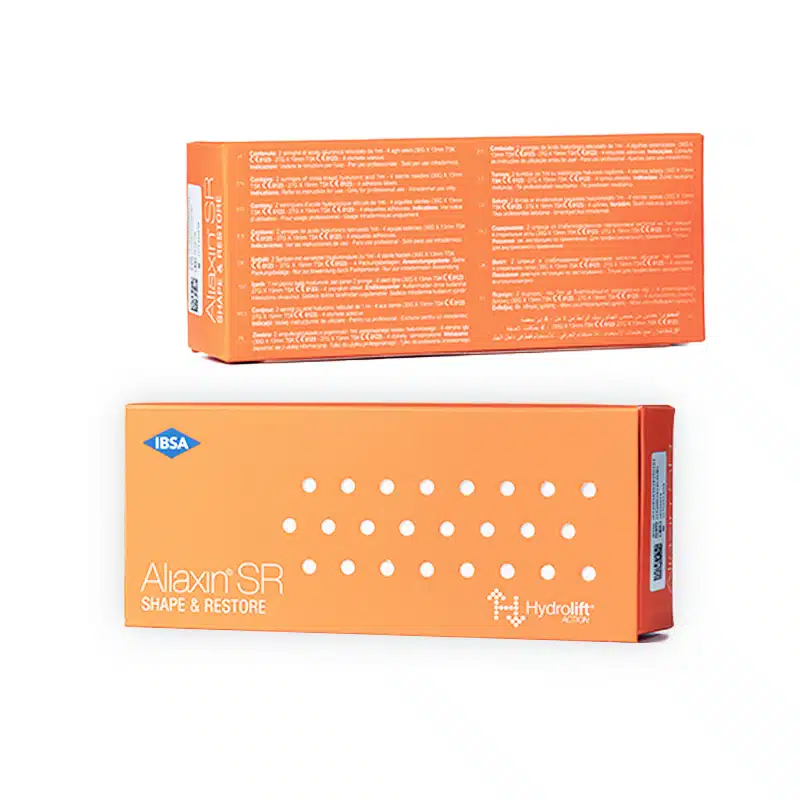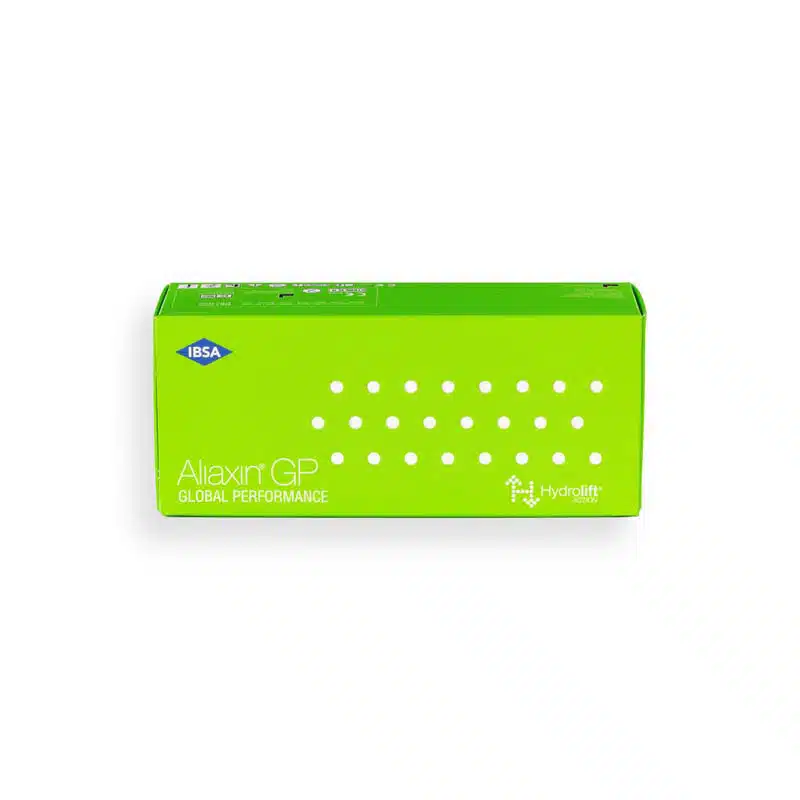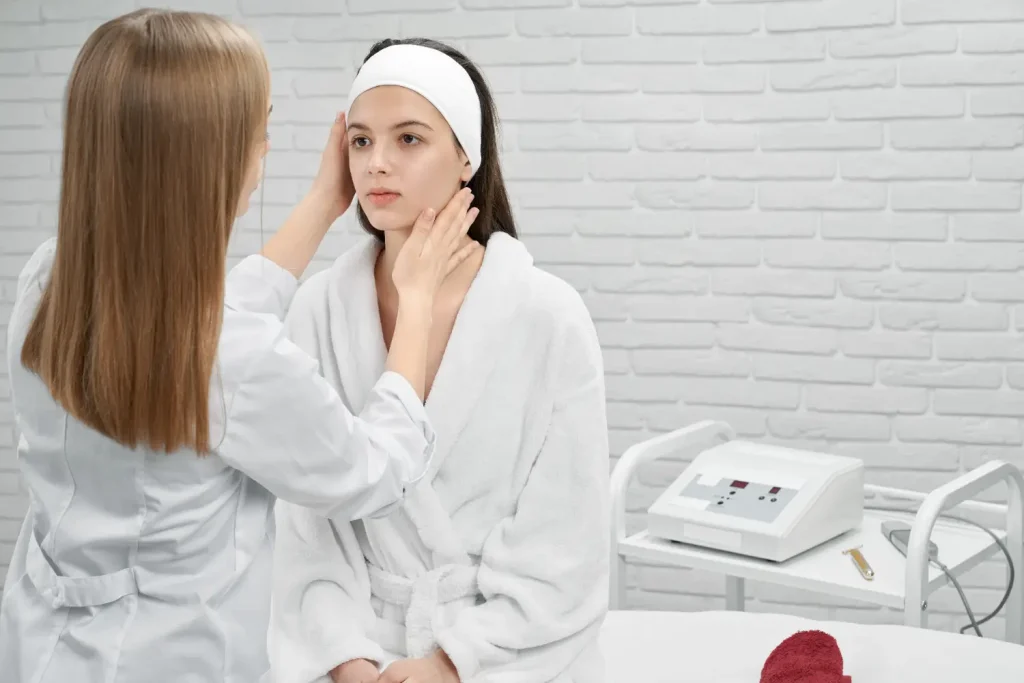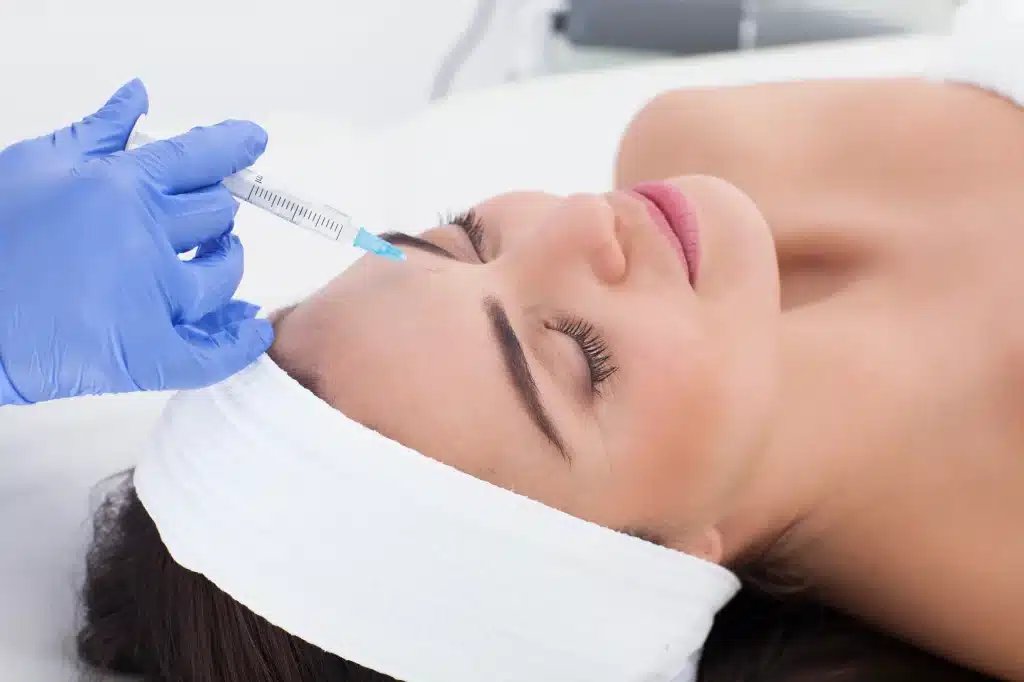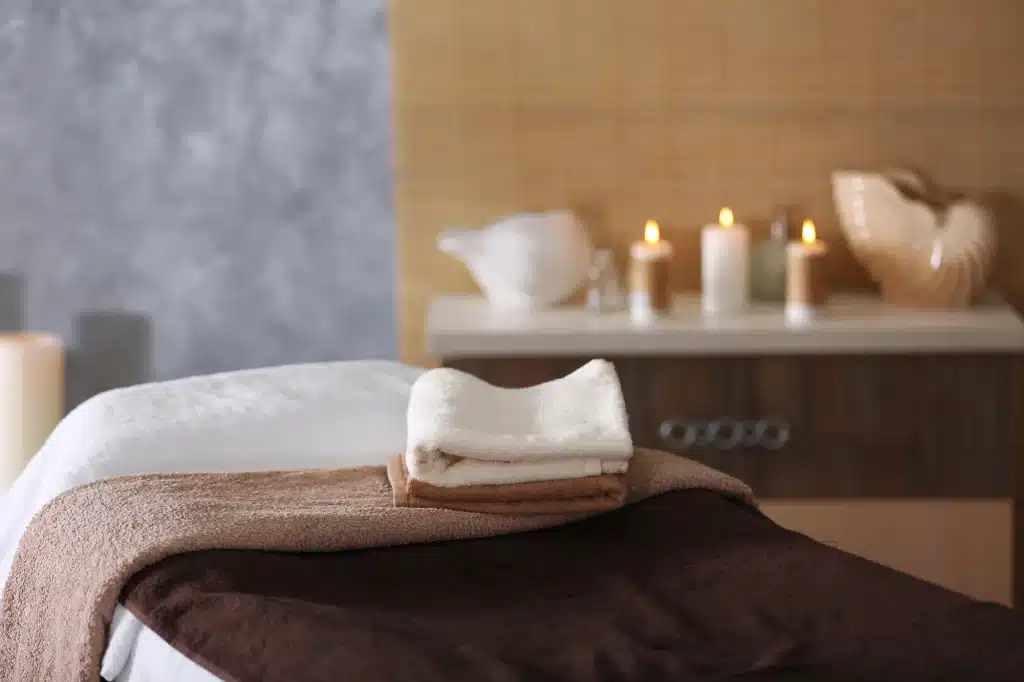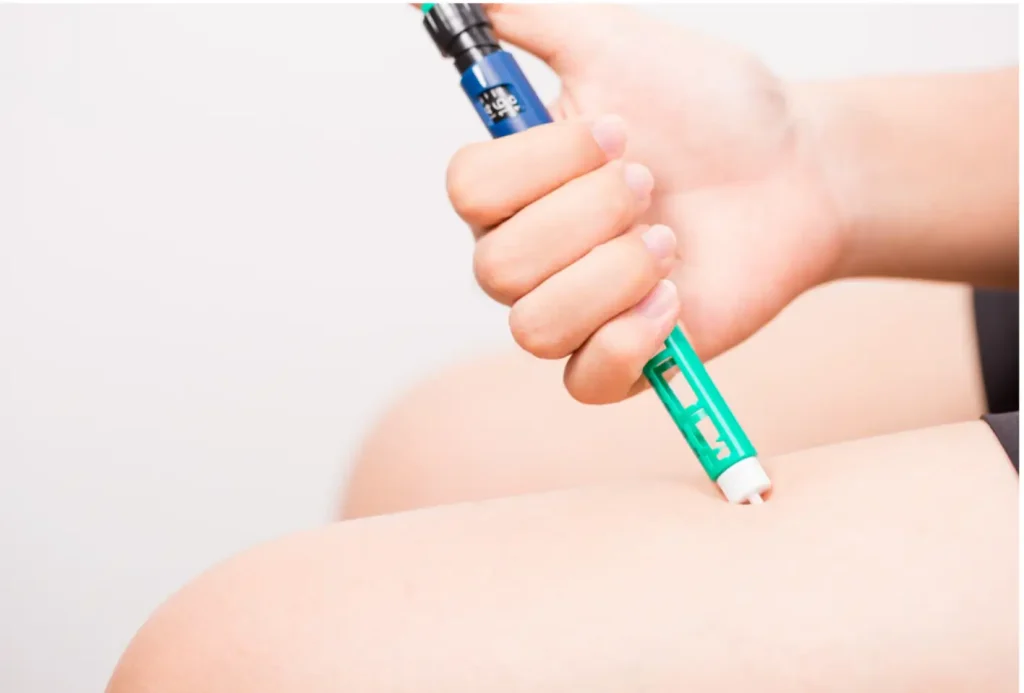Facial rejuvenation has become a cornerstone of aesthetic medicine, with recent studies underscoring the transformative potential of dermal fillers. A 2024 study by Hamrah and Aleman highlights the exponential rise in minimally invasive procedures, with dermal fillers emerging as a preferred choice for addressing volume loss, wrinkles, and facial contouring.
Among the leading options, Aliaxin and Restylane stand out as hyaluronic acid-based fillers celebrated for their versatility and efficacy. These products cater to diverse aesthetic needs, offering solutions for volume restoration, wrinkle smoothing, and contour enhancement. Their unique formulations make them popular choices for individuals seeking minimally invasive facial rejuvenation.
In this article, we will compare Aliaxin and Restylane, unraveling their key differences to help you decide which aligns with your vision for facial rejuvenation.
Key Takeaways
- Aliaxin and Restylane are hyaluronic acid (HA) fillers but have different formulations and consistencies.
- Restylane offers a firmer structure, making it ideal for contouring, while Aliaxin provides a softer, more hydrating effect.
- Aliaxin is often preferred for deep hydration and volume restoration, while Restylane is better for precision shaping and fine lines.
- The longevity of Restylane varies, but it typically lasts 6-18 months, and Aliaxin lasts around 6-12 months, depending on the area treated.
- Both fillers have high safety profiles, but proper injection technique and patient selection impact results and side effects.
About: Medical Spa RX provides medical practices with premium products at the best prices. If you’re looking to buy Aliaxin fillers for your practice, the sales representatives at Medical Spa RX can give you guidance.
Comparative Analysis of Formulations
Aliaxin and Restylane are hyaluronic acid-based fillers but differ in composition and technology. Aliaxin combines HA molecular weights to achieve deep hydration and a natural-looking plumping effect. It has a smoother, gel-like consistency that integrates well into the skin.
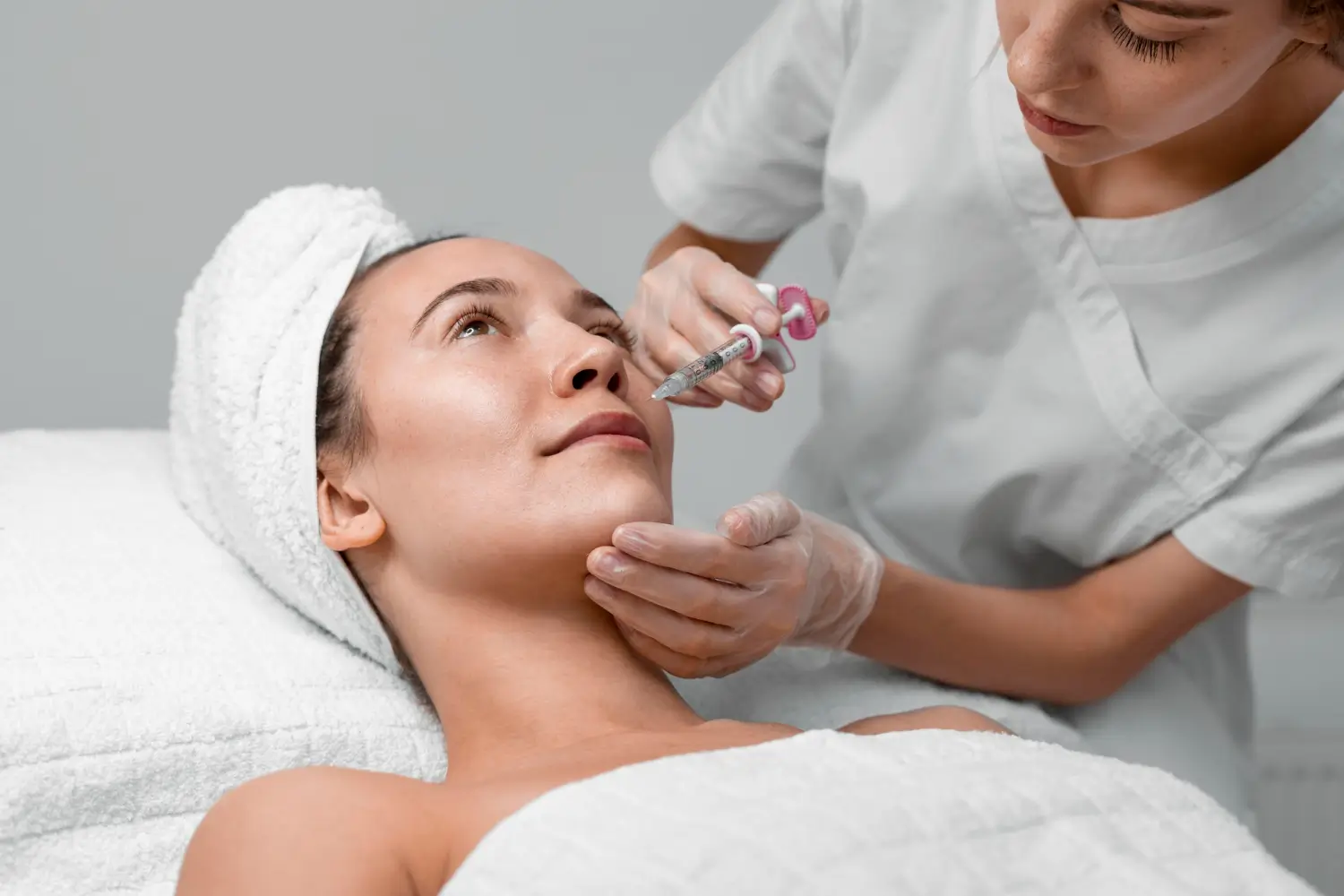
Restylane, on the other hand, is based on NASHA (Non-Animal Stabilized Hyaluronic Acid) technology, giving it a firmer texture. It is available in multiple variants with different consistencies, allowing for tailored applications. Restylane’s firmer structure provides better lifting capacity, making it suitable for contouring and defining facial features.
Clinical Applications and Aesthetic Outcomes
Both fillers serve distinct purposes in facial rejuvenation. The choice depends on the treatment area, patient goals, and desired longevity.
- Volume Restoration: Aliaxin is commonly used to restore lost volume, particularly in the cheeks and midface. Its hydrating properties provide a more youthful appearance without excessive firmness. Restylane, with its structured composition, is used for lifting and sculpting.
- Fine Lines and Wrinkles: Restylane treats fine lines and wrinkles, particularly around the mouth and eyes. Its firmer consistency allows for precise placement and better wrinkle correction. Aliaxin, while also capable, is often chosen for softer, natural wrinkle filling.
- Lip Augmentation:Due to its softer gel structuret, Aliaxin provides a plump, hydrated lookfor lip enhancemente. Restylane Kysse, a specialized variant, offers more definition and control, making it ideal for those seeking a well-shaped lip contour.
- Jawline and Chin Contouring: Restylane’s firmer variants (such as Restylane Lyft) define the jawline and chin well. Aliaxin is not typically used for these areas due to its softer consistency, which may not provide enough support.
- Under-Eye Treatment: Aliaxin’s hydrating properties make it a good choice for correcting tear troughs. It reduces hollowness while maintaining a natural appearance. Restylane can also be used, but due to its firmer texture, it may be more prone to lumping.
Longevity and Safety Profiles
The longevity of Aliaxin and Restylane varies based on the treated area and individual metabolism. Depending on the product variant and placement, Aliaxin typically lasts 6 to 12 months. It is designed for hydration and soft volume restoration, gradually breaking down over time.
On the other hand, Restylane offers a longer duration of 6 to 18 months, especially with its firmer variants like Restylane Lyft, which provide structural support and definition. The thicker the filler lasts longer, making Restylane a preferred choice for contouring treatments.
Both fillers have firm safety profiles when administered by skilled injectors. However, mild side effects can occur, such as swelling, bruising, and redness at the injection site. More serious complications, though rare, include lumps, migration, or vascular occlusion. Proper technique and patient assessment minimize these risks.
Expert Opinions on Optimal Use Cases
Based on the Aliaxin before and after photos of patients, dermatologists recognize Alidya as an innovative injectable treatment for cellulite. They highlight its ability to improve microcirculation, dissolve toxins, and enhance skin elasticity, making it a minimally invasive option. Experts also emphasize combining Alidya with a healthy lifestyle for optimal and lasting results.

Restylane, on the other hand, is widely praised by dermatologists for its versatility and effectiveness in facial rejuvenation. It’s a hyaluronic acid-based formula is noted for restoring volume, smoothing wrinkles, and enhancing facial contours. Dermatologists appreciate its immediate, natural-looking results and minimal downtime, making it a trusted choice for various aesthetic applications.
Conclusion
Aliaxin and Restylane offer excellent options for facial rejuvenation, but their differences make them suited for distinct applications. If hydration and subtle volume are priorities, Aliaxin is a strong contender. Restylane provides better structure for contouring and wrinkle correction. The best choice depends on patient needs, injector expertise, and the desired aesthetic outcome.
FAQs
1. How does Aliaxin compare to other HA fillers?
Aliaxin is known for its smooth texture and hydrating effect, making it ideal for natural-looking volume enhancement and moisture retention.
2. Is Aliaxin safe for all skin types?
Yes, Aliaxin is biocompatible and safe for most skin types. However, a consultation is necessary to determine suitability.
3. Can Aliaxin be used with other fillers?
Yes, many practitioners combine Aliaxin with firmer fillers like Restylane for customized results.
4. What is the recovery time after Aliaxin injections?
Most patients experience mild swelling or bruising that subsides within a few days. Normal activities can resume immediately.
5. How soon can I see results after an Aliaxin treatment?
Results are visible immediately, with optimal effects seen within one to two weeks as swelling settles.
References
Hamrah D, Aleman B. Injectable Soft Tissue Fillers and Their Use in Facial Rejuvenation. Springer eBooks. Published online January 1, 2024:301-313. doi:https://doi.org/10.1007/978-3-031-47307-4_42
Gomes MJ, Gothe RC. Advancements in non-invasive facial rejuvenation: A review of Endolift and related technologies. LUMEN ET VIRTUS. 2024;15(40):3552-3557. doi:https://doi.org/10.56238/levv15n40-017
Farber SE, Epps MT, Brown E, Krochonis J, McConville R, Codner MA. A review of nonsurgical facial rejuvenation. Plastic and Aesthetic Research. 2020;2020. doi:https://doi.org/10.20517/2347-9264.2020.152


